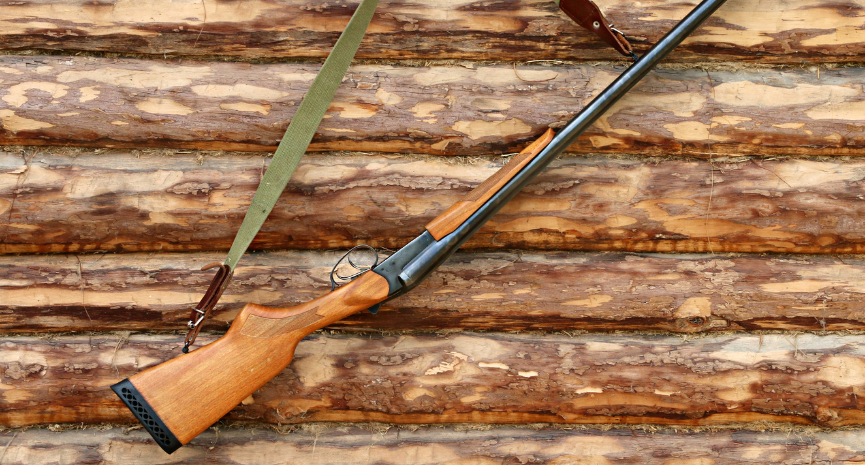
The start of the 21st century was marked with noteworthy progress in the ammo industry, mainly boosted by the US Military and the Global War on Terrorism (GWOT). Approximately the same time, several major and small ammunition producers have sought and self-sufficiently developed cartridges with terminal knockdown surpassing .223 Remington/5.56mm NATO performance and .308 Winchester/7.62mm NATO within the wildly popular AR-platform rifles.
These ground-breaking cartridges come in mid-bore 6.5mm, 6.8mm, and 7mm calibers and offers the increased capability of incapacitation and range over the existing 5.56x45mm NATO, 5.45x39mm, PRC 5.8x39mm, and 7.62x39mm cartridges.
6.8 SPC Review – What Is 6.8 SPC Rifle?
The 6.8 SPC was developed after the U.S. Special Operations Command (USSOCOM) came up with a program to create a modular, special-purpose rifle that could fire both 5.56mm NATO and 7.62x39mm ammo. In that very same program, USSOCOM realised themselves that the 7.62x39mm had somewhat better terminal performance than the 5.56mm, exactly what a lot of operators in Iraq and Afghanistan had also noticed.
The Enhanced Rifle Cartridge (ERC) program introduced some of the modular rifle program and was headed up by USSOCOM and aided by Remington. To develop the 6.8 SPC, a shortened .30 Remington case was used with a .270 bullet, the very same bullet used in the .270 Winchester cartridge. This bullet has a good ballistic coefficient (BC) with less air resistance in flight, good accuracy and a lot of downrange energy.
More rifles and carbines are currently made in 6.8 SPC have a Spec II chamber. By 2004, civilians have access to the 6.8 SPC, and the round has become a popular AR caliber for hog and deer hunters as well as those serious about personal and home defence issues. The Saudi government’s armed forces also use the 6.8 SPC rifles. Since the round was made to fit in the AR-15 platform, only that few internal components are different than the 5.56mm’s: the bolt head, magazine and barrel.
Accuracy and terminal ballistics do matter. Here are some of the best 6.8 SPC rifles and carbines that are currently available on the market today (as of this writing).
The Criteria – How To Pick The Best 6.8 SPC Rifle?
Material and Coatings
A quality rifle is made of high-grade aluminum and covered with element sensitive proof coatings and/or lenses that will ensure a lifetime of use, the ability to endure shocks, and extreme use in diverse weather conditions. The ruggedness and a solid installation made sure that there will be no wobbling or looseness.
Durability
Price doesn’t always necessarily determine the rifle’s durability, however, the more expensive the components of a rifle, the more life you can expect from it. Tough but versatile construction will guarantee long-term usage, for durable and repeatable performance.
Effective Shooting Range
So the effective range will depend on whether or not the rifle is a great one. The applications will also contribute a factor in the rifle’s effective range coverage.
Review of the Best 6.8 SPC Rifles
While the 6.8 Remington SPC has turned into one of the most available cartridges chambered in the AR-15 platform, some gun makers have provided their semi-auto 6.8mm iterations such as Ruger Mini 14s in 6.8 SPC or Remington modular assault rifle, which is also called the ACR (Adaptive Combat Rifle). Even then, there are several companies manufacturing bolt-action rifles in this caliber.
Anyway, the most common rifle system that peruses this robust little round are the AR-15, mostly for converting an existing .223/5.56mm AR-15 to 6.8mm SPC, which involves only changing barrels, bolts, and magazines or merely exchanging complete uppers.
1. LWRC International – SIX8-A5 16IN 6.8MM SPC 30+1RD
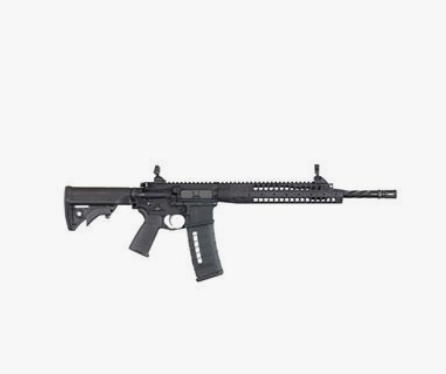
Maryland based, LWRC International Company developed a quality, piston-driven AR in 6.8 SPC by including several patented components and features like the self-regulating, short-stroke, gas-piston system and ambidextrous controls. It includes the charging handle, magazine catch, safety selector, and bolt catch/release.
The SIX8-SPR is manufactured with innovative caliber-specific internals resulting in a cleaner, cooler, more reliable system. Being fully enhanced for the 6.8 X 43mm SPC II cartridge the LWRC SIX8-SPR carbine is available with both 14 inches and 16 inches barrel length choices. The cold, hammer-forged barrel is engineered from 41V45 steel with a NiCorr finish and has a professed lifespan of 20,000 rounds.
The new LWRCI SIX8 family comes with the bolt-carrier group with substantial relief cuts and is protected by a nickel-boron finish. The enflamed ejection port and magazine well are longer and wider than that found on a 5.56 NATO carbine.
Both the upper and lower receivers are made of durable 7075-T6 aluminum alloy as well as a slim-line, free-float handguard. The SIX8-SPR carbine comes with the usual Magpul pistol grip and a few proprietary LWRC parts like Skirmish Back-Up iron sights, compact 6-position buttstock, and LWRC ambidextrous-sling mount.
While the consistent magazines for the 6.8 cartridges were a major drawback, LWRCI resolved the problem by using a new 30-round, 6.8 Rem. SPC magazine, made by Magpul.
2. Stag Arms Model 7-S
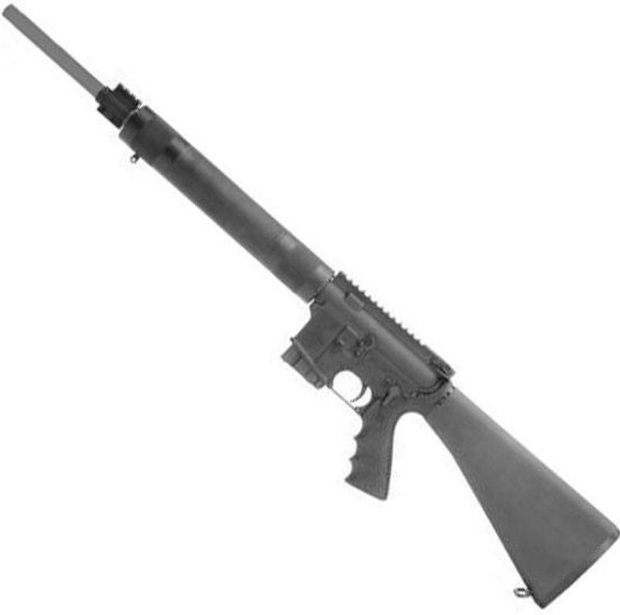
The Stag Arms Model 7-S is fortified with a 20.77-inch barrel so it can really squeeze more speed and energy out of the 6.8 SPC cartridge than a typical 16-inch barrel. Depending on the cartridge, people have collected data that suggests longer barrels increase velocities by 30 to 70 fps. The Model 7-S’ free-floating barrel has a medium contour, tapering down to 0.7 inches in diameter at the muzzle, and it has an 11-degree crown. The rifle has a 6.8 SPC II chamber, and the barrel’s 4-groove, 1-in-11-inch-twist rifling means it prefers bullets weighing anywhere between 90 and 110 grains.
As mentioned previously, what sets the Model 7-S apart is that it comes from the factory with a Nikon 3-9x40mm Active Target Special scope in a 1-piece Nikon M-223 XR mount with 20 MOA of elevation built in. The Active Target scope comes with spring-loaded Instant Zero Reset turrets as well as a quick-focus eyepiece that is convenient to adjust in the field.
The scope comes with a bullet-drop compensating (BDC) reticle that lets you to compensate for the trajectory of your cartridge through your rifles. The reticle comes with a vertical stratum with circular aiming points. According to Nikon, the circles are located based upon an average trajectory for popular projectiles and cartridges that are currently on the market.
Of course, you’ll still required to see how your preferred loads match up to with the markings on the reticle. Most people only had a 100-yard range for testing, but some people used the additional aiming points because they knew the hits would be higher at 100 yards. The same group of people also compared their cartridge data using a ballistics calculator. This all may seem overly complicated, but some people like data and they like knowing how their bullet travels. You can also use the aiming circles just below the horizontal stratum in order of 200 yards, 300 yards and so on as a general guideline.
At 100 yards, the Stag Model 7-S gave its users 1.01-inch five-shot groups with a Federal Fusion load as well as Hornady’s 120-grain Custom SST ammo. Another load from Hornady, the 110-grain V-MAX, shaped a 0.65-inch group, and Silver State Armory’s 100-grain load came in 2nd with a 0.74-inch group. This is actually an impressive performance, and it all translates to a dead deer in a real hunting scenario.
3. Ambush 6.8 SPC II
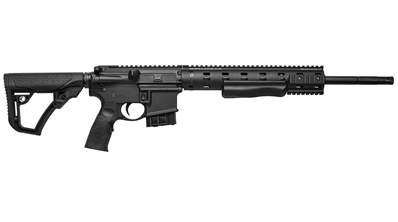
Aside from chambering the Ambush 6.8 in a more powerful cartridge, Ambush Firearms has tricked-out this rifle so that it is flawlessly configured for the hunter who are looking to pursue anything from varmints to deer with the same rifle.
Ambush Firearms begins with a Daniel Defense lower and upper and attached a Modular Float Rail (MFR) handguard. The aluminum handguard allows the barrel to free-float over its entire length and is punctured with ventilation cuts to decrease weight and allow for barrel cooling. At the front of the handguard, on each side and the bottom, there are 3-inch sections of Picatinny rail that are detained in place by screws. This allows the attachment of numerous accessories like a flashlight when hunting critters at night.
The top of the upper receiver has an essential section of Picatinny rail that pairs perfectly with the integral rail on the handguard. This offers you with 18.25 inches of uninterrupted rail with 42 slots. The beauty of this system is that it will let you to position standard optics, night-vision scopes and even iron sights or combinations of all 3 in just about any configuration a shooter may want.
Inside the MFR handguard is the free-floated, 16-inch barrel, which is also made by Daniel Defense. It has a mid-length gas system and is maxed off with a threaded muzzle that is concealed behind a knurled, threaded cap, which also serves to defend the crown of the barrel. If you are concerned in attaching a suppressor, all you will need to do is unscrew the cap and put on the suppressor. On the underside of the handguard, there is a very modest but much appreciated attachment that greatly improves the feel of the rifle in your hand.
This polymer handhold is somewhat tapered and resembles a standard sporting rifle forearm. It also lets you to provide some additional rearward pressure on the rifle with your support arm without the common and more tactical vertical foregrip.
Ambush Firearms opts for a Geissele Super Semi-Auto two-stage trigger for this rifle. According to most users’ trigger pull gauge, the Geissele trigger brakes at an exceptionally crisp 4.25 pounds after pulling through the 2-pound first stage. This is an outstanding trigger, which, in a lot of users’ mind, is well tuned for hunting. Ambush Firearms should be much-admired for including a good trigger on an out-of-the-box AR-15-style rifle.
Aside from the Realtree AP camo finish and the absenteeism of a forward assist, this rifle looks like your common AR-15-style carbine. It has a 6-position collapsible stock, a brass deflector, a dust cover, a left-side-mounted 2-position thumb safety and an A2-style grip.
4. ArmaLite M-15A4
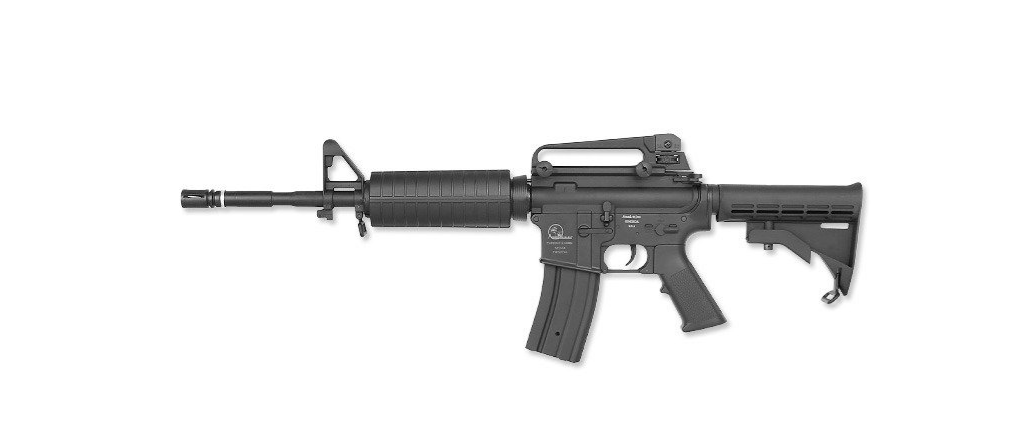
All steel surfaces are phosphate-engineered to mil-spec standard. You can have any iron sights you wish to have with the gun (for example, the gun comes without them). That’ll cost at least another US$75 for a set of aftermarket BUIS.
The whole package weighs a tiny bit over 7 1/2 pounds without a magazine or optics. The T&E gun featured olive-drab furniture. According to the Armalite website, so do the rest of their rifles.
Fit and finish are top-quality, both internally and externally. Unlike G.I. M-16s and many lower-grade civilian ARs, the M-15 receiver 1/2s mate together accurately and securely, with tight-fitting action pins and no glue between the upper and lower receivers. People can searched in vain for any machining marks inside or outside the gun. People have have found a single milling mark on the inside of the M-15’s lower receiver.
All of the M-15’s controls are in your standard AR positions, and all of them work with solid precision. There’s no tackiness in the magazine release, no rattle in the charging handle when it’s locked forward, and no gumminess in the safety lever. There is some shake and rattle in the polymer stock furniture, however that seems common to most ARs.
Southpaws need not apply. While the M-15’s charging handle is ambidextrous, the magazine release sits on the right side of the gun, the safety and bolt release are San Franciscan (they live on the left). FN pinched their SCAR’s safety and magazine release by adding a handful of new parts, producing a wonderful switch-hitter’s rifle. I’d like to see more AR builders follow FN’s sample, It is certainly a lot cheaper and easier than building entire “mirror-image” AR.
The M-15 handles and fires off much like any other quality AR-pattern carbine, although the heavy barrel and longer handguard do impose a one-pound weight penalty. It may have already qualify as a “classic” design because of its ubiquity. However, we are not a huge fan of the M4 collapsible stock. We just don’t find it particularly comfortable nor stable. Then again we don’t need to adjust my buttstock to fit the hard Kevlar vests our soldiers and Marines wear. The heaviest shooting gear we have worn is a parka with a fleece liner.
The Armalite M-15 is a well-established modern AR-15 choice. For a few hundred dollars more than a general M4 clone, the M-15 provides you with a solid gun with top-quality materials like a chrome-lined barrel and an all-forged alloy receiver. It weighs a pound more than your usual civilian M4, but that pound of barrel provides you with less than 1.5 MOA accuracy, exceptional heat stability, and slightly higher velocity from the same complete length as an M4.
The test rifle seems to have been damaged before some people ever laid hands on it, and it certainly gave people a bad day at the shooting range. On the other hand, malfunctions dropped to 0 as soon as gun users lubed the rifle thoroughly. Furthermore, we already know that all ARs are sensitive to proper lubrication.
So we can’t say it’s perfectly reliable, but it’s almost there. It’s gone more than 600 rounds without a hiccup, and as soon as it hits 1,000 malfunction-free rounds, we will be prepared to pronounce it completely trustworthy. Any gun can break after several thousands of rounds in the hands of trigger-crazy gun writers.
Conclusion
The 6.8 SPC may never have the success of the 5.56/223, however it’s a round that’s held its own. It could’ve taken the route to obscurity, however it keeps kicking. As ammo technology improves, we are betting we’ll see the 6.8 SPC continue to grow. Is it for everyone? No, but not everything is. For an AR rifle owner, it’s an affordable way to get into a new caliber that provides a little more oomph and little more bang than 5.56.
Frequently Asked Questions (FAQs)
Will a 6.8 SPC Rifle be able to kill a deer?
Of all the AR deer cartridges on the market, the 6.8 SPC is the most adaptable and versatile. And we believe that it’s the best. It’s great for whitetail, great for hogs and it doubles as a fantastic defensive round. The .270-caliber bullet shoots flat and retains its energy well down range.
What is the effective shooting range of a 6.8 SPC rifle?
About 500 yards. The thought-provoking thing about 6.8 Remington SPC is the terminal performance down range. With about 200 feet per second more velocity than that famous AK-47 round, it has reach out and touch someone performance out to about 500 yards. The cartridge case is based on the .30 Remington, which explains the need for a bolt swap when converting a standard AR rifle. Similar to development of 300 Blackout from .223 Remington cases, the 6.8 takes a shortened .30 Remington case and necks it down for the .277 inch bullet.
The beauty of this caliber is increased diameter and bullet weight over .223 Remington, while maintaining big time velocity from an AR platform with its overall cartridge length limitations.

Hello there, it’s Michael here. A gun lover since young, served the country for the last 20 years. I started the blog to share my experience and gun-related knowledge accumulated throughout the years. Hopefully, you will find something useful over here or just have fun! You can learn more about me here.
